- Skip to primary navigation
- Skip to main content
- Skip to primary sidebar
PESTLE Analysis
Insights and resources on business analysis tools

Under Armour SWOT Analysis and 4 Recommendations
Last Updated: May 3, 2024 by Jim Makos Filed Under: Companies , SWOT Analysis
Hailing from Baltimore, USA, Under Armour (started in 1996) is a company that manufactures footwear, sportswear, and casual apparel. It has also created various fitness apps to help people stay healthy.
Under Armour became a multibillion-dollar brand under the leadership of Kevin Plank, the founder and CEO from its inception until 2020, when the COO Patrik Frisk replaced him, only to return as CEO in 2024. The company initially gained recognition for its moisture-wicking performance apparel designed to keep athletes cool and dry during exercise.
Under Armour has had to shut down stores because of the COVID-19 pandemic, which has been a massive blow for them, as it has been for many businesses. As of 2024, Under Armour, Inc. continues to position itself as a major player in the sports apparel and equipment industry.
We’ll work out an Under Armour SWOT analysis to see where it is standing but first, let’s understand what a SWOT analysis actually is.
What is SWOT Analysis?
Lookout; the FBI is after you! Just kidding, no need to get your knickers in a twist; you’re safe. You see, SWOT essentially stands for Strengths, Weaknesses, Opportunities, and Threats . A SWOT analysis is what you conduct when you’re interested in learning about the standing a particular company has in the marketplace; it is a great way to assess and understand the competition a company has.
In a SWOT analysis, the components are divided into internal and external factors. Strengths and weaknesses are considered internal factors because they are inherent to the company itself and can typically be directly managed or influenced by the organization. You can learn everything you need to know about this strategic tool on our dedicated page for SWOT analysis .
Let’s now see where Under Armour falls based on this analysis.
Under Armour SWOT Analysis
Under armour strengths.
Every SWOT analysis begins with a list of strengths . The strengths below showcase Under Armour’s capacity to leverage its brand, innovation, and strategic market moves to maintain a strong position in the competitive sports apparel market.
- Brand Recognition and Loyalty : Under Armour has successfully built a strong brand recognized globally for its innovation in performance apparel. The brand loyalty is evident in its consistent customer base, particularly among athletes.
- Innovative Products : Innovation is a core strength, with the company regularly introducing new fabrics and technologies, like their moisture-wicking fabric and HeatGear clothing lines, which keep athletes dry and comfortable during workouts. We have a strong appreciation for Under Armour’s marketing strategies, which always stand out from the clutter. The core strength of this brand is the revolutionary T-shirts they manufacture, which are comfortable, light, and very resistant to sweat, perfect for athletic people who like to stay fit.
- Diverse Product Range : Under Armour offers a broad array of products, including sports gear, footwear, and casual apparel, which appeals to a wide demographic, from professional athletes to casual gym-goers.
- Strong Celebrity Endorsements : The company has a strong roster of endorsements from high-profile athletes and celebrities, which enhances its visibility and appeal.
- Strategic Partnerships and Sponsorships : Under Armour has secured key partnerships with sports teams and educational institutions, which not only broadens its market reach but also solidifies its status in the athletic community.
- Global Presence : The coolest thing about the brand is that it has managed to have a global presence with its key locations in North America, Asia Pacific, EMEA, and Latin America. With operations in numerous countries, Under Armour has a substantial international market presence that helps diversify its revenue streams and reduces dependence on any single market.
- E-commerce Strength : The company has a robust e-commerce platform that complements its brick-and-mortar stores, making its products easily accessible worldwide.
- Supply Chain Efficiency : The Under Armour business model has managed to survive and prosper amongst competition because of the brand’s diverse distribution channels, portfolio, and exceptional quality clothing. Under Armour has developed an effective and responsive supply chain, which helps in minimizing costs and adapting quickly to market changes.
- Community and Social Engagement : They actively engage in community initiatives and sports programs, which boosts their brand image and customer loyalty.
- Commitment to Sustainability : Increasing focus on sustainability, with initiatives aimed at reducing environmental impact and promoting sustainable practices, aligns with the growing consumer preference for eco-friendly products.
These strengths have eventually paved the way for Under Armour to be a step ahead of the competition in the sports apparel industry. Now that the company has gone digital by creating its fitness apps, it can claim to be the biggest fitness company globally.
Under Armour Weaknesses
Identifying weaknesses in Under Armour’s business strategy and operations provides insights into areas where the company might be vulnerable or lagging behind its competitors. Moving to the second section of our SWOT analysis, here are twelve weaknesses that Under Armour might be facing:
- High Dependence on North American Market : Despite its global presence, a significant portion of Under Armour’s revenue is still heavily reliant on North American sales, exposing it to risks from regional economic downturns.
- Limited Diversification : Compared to competitors like Nike and Adidas, Under Armour has less diversification in sports offerings and lifestyle products, which can limit market appeal. Whereas the Under Armour target market consists of both men and women, they don’t seem to be the number one choice for women athletes. There aren’t many options to customize Under Armour apparel and accessories, either.
- Inventory Management Issues : Under Armour has faced challenges with excess inventory in the past, which can lead to increased operational costs and reduced profitability due to markdowns.
- Pricing Strategy : The brand is positioned as a premium sports apparel provider, which might limit its customer base, particularly in cost-sensitive markets.
- Intense Competition : Under Armour faces fierce competition from established brands like Nike, Adidas, and newer entrants, which consistently pressure its market share and pricing.
- Weak Performance in Footwear : Although Under Armour has expanded into footwear, it has struggled to gain a significant market share compared to its apparel products, partially due to lower consumer ratings on performance and style.
- Supply Chain Complexity : Global supply chain disruptions have exposed vulnerabilities in Under Armour’s logistics and distribution strategies, impacting its ability to meet demand efficiently.
- Inconsistent Quality Across Product Lines : There have been occasional complaints about inconsistent quality and durability in some product lines, which can hurt the brand’s reputation.
- Retail Store Performance : The physical retail sector, where Under Armour has significant investments, is increasingly challenging with high operational costs and shifting consumer preferences towards online shopping. They already had fewer physical stores worldwide, to begin with, compared to competitors such as Nike, but this recent pandemic has made things much worse for the company.
- Marketing Missteps : Some of Under Armour’s marketing campaigns have faced criticism for not resonating well with target audiences, reflecting a potential misalignment with market dynamics and consumer preferences.
- Management Turnover : The company has experienced significant executive turnover in recent years, which can lead to strategic inconsistency and hinder long-term planning.
- Data Security Concerns : Like many retailers, Under Armour has faced issues with data security, specifically a significant data breach in its MyFitnessPal app, which can undermine consumer trust.
Under Armour Opportunities
Under Armour has several opportunities to leverage for growth and improvement. As we move to the third part of our SWOT analysis, here’s a detailed look at 15 opportunities that could be impactful for their strategy:
- Expanding Global Footprint : By increasing its presence in emerging markets like Asia and Latin America, Under Armour can tap into new customer bases and reduce its dependency on the North American market.
- Women’s and Kids’ Athletic Wear : The market for women’s sports apparel and athleisure is growing. Under Armour could expand its offerings in this segment to meet the rising demand. They can also work on marketing strategies to attract female consumers to whom they cater but somehow don’t appeal to, not as much as they could, at least. The Under Armour target market can easily be expanded to include a kid’s range too. They also can diversify their product line and venture out into different types of sports to grow even further.
- Sustainable Products : Increasing consumer awareness and demand for eco-friendly products present an opportunity for Under Armour to innovate and lead in sustainable sports apparel.
- Footwear Innovation : Investing in research and development to enhance the performance and style of its footwear line could help Under Armour capture more of this lucrative market.
- Digital Transformation : Enhancing digital platforms for a better customer experience and integrating advanced technologies like AI for personalized products and services can boost sales and customer loyalty.
- Health and Wellness Trend : Capitalizing on the growing trend towards health and fitness, Under Armour can offer more health-oriented products or services, such as fitness apps or wellness programs.
- Strategic Acquisitions : Acquiring smaller brands or startups with innovative technologies or products could allow Under Armour to broaden its product line and access new markets.
- Partnerships with Esports : The esports industry is rapidly growing. Under Armour could forge partnerships with esports teams or tournaments to market its products to a younger, tech-savvy audience.
- Augmented Reality Shopping : Implementing AR in shopping apps to allow customers to try products virtually could enhance the online shopping experience and increase sales.
- Collaborations with Designers : Limited edition collaborations with well-known designers or celebrities could generate buzz and appeal to a broader consumer base.
- Expansion into Lifestyle Apparel : Broadening its product range to include more casual and work-from-home apparel could capture more of the everyday wear market.
- Smart Clothing Technology : Investing in the development of smart clothing that can track health metrics could position Under Armour at the forefront of technological innovation in sportswear.
- Increased Focus on Retail Experience : Revamping retail stores to offer unique in-store experiences can attract more foot traffic and enhance brand loyalty.
- Community and Sports Programs : Increasing involvement in community sports programs and school partnerships can improve brand visibility and foster customer loyalty from a young age.
- Leveraging Social Media : Enhancing social media engagement and influencer partnerships can effectively reach and engage with the younger demographics. The “fit” lifestyle is becoming more and more popular with each day, so it is an industry full of potential for Under Armour. With fitness enthusiasts and influencers increasing daily all over social media, the fitness world continues to grow without any plans of stopping.
Under Armour Threats
In the context of a SWOT analysis, recognizing potential threats is crucial for Under Armour to proactively mitigate risks. In the final section of our SWOT analysis, here are twelve significant threats that the company may face:
- Intense Market Competition : Under Armour competes with larger, more established brands such as Nike and Adidas, which have greater resources for marketing, innovation, and global presence. Their core competency of sweat-proof T-shirts is no longer specific only to this brand; the competition has caught up, and this type of design in apparel is available in other brands, often at better prices too.
- Economic Downturns : Global economic instability, like recessions, can reduce consumer spending on sporting goods and apparel, impacting Under Armour’s sales.
- Currency Fluctuations : As a global retailer, fluctuations in currency exchange rates can affect profitability and pricing structures in international markets.
- Counterfeiting : The presence of counterfeit products can harm Under Armour’s brand reputation and reduce its market share.
- Changes in Consumer Preferences : The sportswear industry is trend-sensitive; a shift in consumer preferences away from Under Armour’s core product offerings can lead to reduced sales.
- Supply Chain Disruptions : Events like natural disasters, pandemics, or political instability affecting countries where Under Armour manufactures its products can disrupt supply chains.
- Regulatory Changes : New regulations related to trade tariffs, import-export controls, and manufacturing standards can increase costs or limit market access.
- Technological Disruptions : Failure to keep up with technological advancements in product development and consumer engagement could leave Under Armour behind its competitors.
- Retail Channel Disruptions : The shift towards online shopping can threaten Under Armour’s physical retail business model, necessitating higher investments in digital transformation.
- Data Security Risks : As Under Armour expands its digital footprint, it becomes more susceptible to cybersecurity threats, which can compromise consumer data and trust.
- Labor Practices Scrutiny : Like many global brands, Under Armour could face scrutiny and reputational damage over labor practices in its supply chain if not managed ethically.
- Health and Fitness Trends : Changes in health and fitness trends can impact the demand for specific types of apparel and equipment, potentially disadvantaging Under Armour if it fails to align with these trends.
4 Recommendations based on our Under Armour SWOT Analysis
Under Armour has been a player in the sports industry for decades now, and they have seen a very long period of constant highs.
Based on the comprehensive SWOT analysis of Under Armour, here are four strategic recommendations that could help the company build on its current strengths, address pressing weaknesses, seize new opportunities, and better prepare for potential threats:
- Enhance Global Market Diversification : To reduce its dependency on the North American market and mitigate risks associated with economic fluctuations, Under Armour should aggressively expand its footprint in emerging markets. This could involve localized marketing strategies, partnerships with local athletes, and expanding distribution channels to cater to regional tastes and preferences. This approach not only spreads risk but also taps into new revenue streams. According to reports , Under Armour’s international segment more than doubled over a four-year period in late 2023!
- Invest in Footwear and Women’s Segments : Given the opportunities in the growing markets for women’s sports apparel and footwear, Under Armour should focus on diversifying and enhancing its product offerings in these categories. This could involve investing in targeted marketing campaigns, collaborating with fashion influencers, and prioritizing research and development to innovate products that meet specific demands in these segments.
- Accelerate Digital Transformation and E-commerce Initiatives : To address the shift towards online shopping and compete effectively with rivals who are advanced in digital capabilities, Under Armour should enhance its e-commerce platforms. Improving user experience, employing advanced data analytics to personalize marketing efforts, and integrating augmented reality features to try products virtually can enhance online consumer engagement and sales.
- Strengthen Supply Chain Resilience and Sustainability Practices : In response to threats from supply chain disruptions and increasing consumer demand for sustainable products, Under Armour should invest in making its supply chain more resilient and environmentally friendly. This could include diversifying manufacturing locations, investing in sustainable materials and processes, and enhancing transparency in labor practices. Such initiatives can also serve as a marketing tool to boost the brand’s image among eco-conscious consumers.
This proactive approach will support the company’s long-term growth and stability in the competitive sportswear market.
Despite the potential threats faced by them, especially in light of the pandemic, we believe Under Armour still has the potential of becoming a key competitor for other similar brands, provided they play on their strengths and divulge into the opportunities effectively.
Having now completed the SWOT analysis of Under Armour, here is the analysis of Under Armour’s competitors we have conducted here at PESTLEanalysis:
- SWOT analysis of Nike
- SWOT analysis of Puma
- SWOT analysis of Adidas
- SWOT analysis of Lululemon
- PESTLE analysis of the sportswear industry

How Under Armour Is Challenging The Athletic Market
Table of contents.
It’s hard to believe that Under Armour was established in 1996 given the way it competes with industry giants Nike and Adidas.
A retail powerhouse in the athletics space, Under Armour is renowned around the globe due to its premium-quality products – apparel, footwear, accessories, and equipment – backed by great branding, celebrity endorsements, and tactful product placements.
Here are a few statistics from 2020 highlighting Under Armour’s leading position:
- Net Revenue of $4.5 billion
- Gross Profit of $2.1 billion
- Share Price of $14.9
- Total Assets of $5.03 billion
- Around 15,000 employees worldwide
- 100+ countries where Under Armour products are sold
- Operates in four geographic areas : North America, Latin America, Europe, the Middle East and Africa ("EMEA"), and Asia-Pacific
With a clear-cut purpose of ‘Empower Those Who Strive For More” Under Armour strives to enhance the performance of athletes at all levels from all walks of life as well as people with active lifestyles.
Let’s now take a detailed look at the growth journey of Under Armour…
{{cta('eed3a6a3-0c12-4c96-9964-ac5329a94a27')}}
Under Armour: The Poster Child For Next-Gen Performance Apparel
It was 1995, and Kevin Plank had an idea while playing as a fullback at the University of Maryland Football team.
Kevin had had enough of changing his sweat-soaked cotton t-shirts worn over his jersey during his two-day practice. The problem wasn't just the sweat and the continuous changing of shirts, but the fact that the shirts drenched in sweat made him hot and heavy, impacting his performance negatively.
At the same time, he was fascinated with the way his compression shorts stayed dry and wondered if there was a particular type of fabric that could be used to make lightweight shirts. This made him realize that there is an unexplored opportunity to find a better alternative to cotton t-shirts.
From Idea To Inception
After graduating, Kevin began working on the prototypes of shirts in 1996. He tried and tested and eventually designed a shirt made of synthetic fabric that would wick away moisture and fit athletes perfectly. Named "The Shorty," prototype #0037 started it all.
Not only was it soft, stretchy, and skin-tight, but it also wicked away sweat faster than anything else out there, keeping athletes light, dry, and cool. No wonder that when he gave the prototypes to his teammates at Maryland and friends who went on to play in the NFL, he received glowing feedback with both male and female players from different sports showcasing their interest. He further perfected the design and officially launched the "HeatGear" - a synthetic base layer made to wick away sweat.

With this, Kevin Plank founded Under Armour on September 25, 1996, by using all his savings and even racking up a credit card debt of $40,000. He began working from his grandmother's basement in Washington D.C. All this while, he also spent his time traveling with the apparel in the trunk of the car, exploring opportunities to expand and make sales. By the end of 1996, he had managed to make his first big sale of apparel to the Georgia Tech team, earning $17000. Under Armour was well and truly on its way to making a dent in the Nike and Adidas ruled athletic apparels industry.
Why The Name Under Armour?
The widely recognized Under Armour name was the result of a mistake. Yes, that's right. Initially, Kevin wanted to name the company "Heart" as he felt it would be a good representation of wearing your heart on your sleeve. But, luckily, it didn't go through the patent and trademark process. Next, he came up with Body Armor and had almost finalized the name, but it too was already taken. Just around then, one of his acquaintances asked him: "How that company you are working on…. Ummm, Under Armor?" This made a light bulb go on Kevin's head as he instantly liked the name and thought it was ideal. Hence, he went ahead with it. The simplistic yet highly effective and aesthetic logo came straight out of the company name, combing the U in Under With A in Armour. Safe to say, it too was a hit.
Success Comes Calling
Having delivered on the keep-you-cool promise with HeatGear, Under Armour went a step further by introducing ColdGear in 1997 designed to keep athletes warm, dry, and light in cold conditions. The AllSeasonGear soon followed, offering athletes a comfy and high-performance t-shirt for all seasons.
The word about Under Armour's revolutionary t-shirts spread, and a number of teams from the NFL gladly became the company's esteemed customers. The year 1997 ended with $100,000 in sales, and it became crystal-clear that Under Armour had arrived as both Nike and Adidas took notice and began launching similar products.
As 1998 arrived, Kevin knew the company had outgrown Grandma's basement, and it was about time to move. Hence, he set up the company's headquarters and warehouse in Baltimore, MD.
The Big Break
Under Armour was already doing fairly well by any stretch of imagination. But then came the big break in 1999 as Warner Brothers signed the company to outfit two of its films – Oliver Stone's Any Given Sunday (a 1999 sports drama film) featuring Al Pacino and Jamie Fox, and The Replacements (a 2000 sports comedy) starring Keanu Reeves, Gene Hackman, and Orlando Jones among others. In the former, the football team wore Under Armour apparel and accessories, making it a hit with athletes everywhere. To further capitalize on this unique opportunity and make the most of the brand awareness and visibility, the Under Armour team bought a print ad in the ESPN magazine in 2000 with employees forgoing their paychecks so that the company could afford to buy the ad. This move worked even better than they had anticipated and led to an increase of $750,000 in sales.
Key Takeaway 1: Take The Leap Of Faith
If you have an idea, get it out there. Kevin did just that and built a brand from scratch that within a few years of its inception began competing with industry giants such as Nike and Adidas. Was it easy? Absolutely not. From spending his savings and racking up debt to working in his grandmother’s basement and selling apparel from the trunk of his car, Kevin did it all to make his vision a reality.
He knew there was a vacuum in the market and his product could offer high value to athletes and he backed himself. Soon his efforts paid dividends and a number of athletes, teams, and even movie production houses began contracting Under Armour. While at it, Kevin never hesitated to take bold steps such as launching a print ad on ESPN or diversifying the products portfolio.
Under Armour Making Giant Strides
With the turn of the century, Under Armour's fortune changed for the better as the company elevated itself to the next level.
New Products. New Signings. Same Old Effective Marketing Tactics.
In 2001, Under Armour became the official supplier of the National Hockey League and signed licensing deals with USA Baseball as well as Major League Baseball in addition to XFL Football League, garnering more attention than ever.
In 2002, the company further expanded its product portfolio by launching its first-ever line of performance underwear. The Armour Underneath was stretchable, light, and breathable to help wick sweat, enable athletes to recover, and stay comfy.
2003 was a significant year for the company as Rosewood Capital, a private equity firm, invested $12 million into the company, empowering it to expand. Moreover, Under Armour premiered its first-ever television commercial – the now legendary Protect this House – that starred University of Maryland's football standout Eric "Big E" Ogbogu. The ad was quite successful in portraying Under Armour as the voice of the next generation, and its theme pertaining to discipline, hard work, valor helped align the brand with its customers. By 2004, sales were over $200 million, and there was no stopping Under Armour as it went back to its roots and became the official outfitter of the University of Maryland – the place where the idea of the company was born and shaped just 8 years ago.

Here Comes The IPO
Under Armour went public in November 2005 by listing on Nasdaq, raising $153 million and becoming the first U.S. based IPO in almost five years to double on the very first day of trading. The capital enabled the company to diversify its portfolio and expand quickly.
The very next year, Under Armour began offering footwear, and it let the world know that it's launching its first line of football cleats with its "Click-Clack" advertisement, which resonated with the football players worldwide. It was an instant success as within one year, Under Armour captured 23 percent share of the market and became the official footwear supplier to the NFL. Late next year, in 2007, Under Armour opened its first brand house retail store in Westfield Annapolis mall in Annapolis, Maryland.
In 2008, Under Armour launched its highly anticipated performance trainers announcing it through its first Super Bowl Commercial, marking its entry into the athletic footwear industry. In 2009, Under Armour went a step ahead and launched its performance footwear line, striding into the running category. Moreover, the same year, Cal Ripken Jr – a baseball Hall of Famer – established an alliance that paved the way for Under Armour to have a significant presence at various events, including Cal Ripken World Series and minor league Aberdeen IronBirds. Under Armour also reportedly sponsored the reality T.V. show Duck Dynasty and went out of its way to show support to a controversial cast member, Phil Robertson.
Reaching The $1 Billion Milestone
Meanwhile, the company went on its merry way to open new stores and factory outlets in 39 states within the U.S. and also doubled down in expanding to Canada and China. Other than Baltimore, Under Armour also established offices in renowned cities around the globe, right from London in the U.K. and Amsterdam in the Netherlands to Shanghai in China and Paris in France, among many others.
The company signed Tom Brady, arguably one of the greatest athletes in the world, in 2010. It proved to be critical for the company's continuous success in the years to follow.
By 2010, Under Armour was a name that needed no introduction. The company had quadrupled its revenue in just five years and surpassed $1 billion in sales – not too bad for a company that was just launched 14 years ago in a basement.
Key Takeaway 2: Create Your Own Pathway
Under Armour quickly figured out what works for it and what doesn’t. Once it did that, the company stuck to its guns – launching new innovative products focused on enhancing performance, expanding its network of stores and footprint within the U.S. and abroad, and leveraging the power of marketing and advertising to get through to its customers.
These simple strategies delivered results and helped Under Armour reach the monumental $1 billion mark within five years of launching, becoming a force to be reckoned with in the athletic-apparel industry.
From 2011 Onwards To Today
In 2011, Under Armour, thanks to its innovation as well as Research and Development (R&D), developed Charged Cotton – a fabric that was very much like cotton in terms of softness and comfort it provided but dried way faster than cotton. The company also collaborated with Zephyr Technology to develop E39, a health sensor-laden shirt that was also used in the NFL combine.
The next year, Under Armour launched the ultimate sports bra. Having talked to hundreds of athletes and tested thousands of prototypes, Under Armour developed the perfect product for women. The high attention to detail and commitment to enhance the performance of athletes was laid bare with the company’s innovative approach of constructing each cup size to offer unparalleled support and comfort.

Continuing to innovate and offer even better-quality products, Under Armour launched ColdGear Infrared in 2013. It featured the best insulation system – a soft thermo-conductive lining that absorbed and retained body heat, allowing athletes to stay warmer without any additional weight.
Becoming A Tech Company
In the same year, Under Armour made the landmark acquisition of MapMyFitness for $150 million, stepping up its digital health game to create the ultimate digital community for all athletes. In its quest to craft an elevated training experience for athletes and help them improve, Under Armour understood the importance of embracing software, harnessing the power of digital, and acquiring data. Although slightly late to the fitness tracking space, by 2013, Under Armour was a company on a mission to digitize and modernize. By acquiring MapMyFitness, Under Armour aimed to become the best digital training experience provider and mobile fitness platform, encouraging people to lead healthier lifestyles.
In 2014, Under Armour also launched Speedform Appolo, a running shoe tailored to offer speed and comfort. With the tagline “This is what fast feels like,” Under Armour announced that it was well and truly a footwear brand eager to offer the best to its customers. By signing the super-model Gisele Bundchen and Ballerina Misty Copeland in 2014, Under Armour laid bare its strategy to expand the brand to women.
The company also won the contract to become the official apparel and equipment provider to the University of Notre Dame. By 2014, Under Armour was bigger and better than ever with $3 billion in annual sales, surpassing Adidas to become the best-selling sports apparel brand in the U.S.

The very next year, Under Armour acquired MyFitnessPal, the calorie and nutrition counting app maker, for $475 billion in order to expand its digital platform into online fitness communities and, Endomondo, the free GPS-based tracking app maker for $85 million, augmenting its digital offerings.
With the three acquisitions of MapMyRun, MyFitnessPal, and Endomondo, Under Armour creates the world’s largest digital fitness and health community. Having already revolutionized the way athletes dress, Under Armour was now changing the way they live. The idea behind the acquisitions was to build a social community and encourage physical activity. Given that the community would be exposed to the Under Armour brand, it would help drive sales for athletic apparel, footwear, and accessories.
Under Armour also launched the UA Record app that offered everyone, everywhere, the opportunity to proactively manage their health and fitness. The app allowed the syncing of thousands of fitness tracking devices and apps onto its open platform and created a visual and user-friendly dashboard.
Partnerships Driving Growth
Having already signed NBA superstar Stephen Curry in 2013, Under Armour launched the Curry shoe line after he became a two-time NBA MVP. The Curry One shoes were an instant hit, and the sales of his shoe began driving the brand forward. From this point onwards, Curry was the face of the brand to the point that the soles of his shoes had a huge impact on the stock price. That was not all. Under Armour also signed a marketing deal with the legendary Muhammad Ali.
During the same time, Under Armour collaborated with HTC and IBM in a bid to embrace technology and data to deliver additional value to its customers. Furthermore, it partnered with American Soccer League (NASL), UCLA, and Major League Basketball (MLB).
In 2016, Under Armour launched its first-ever smart shoe, the Speedform Gemini 2, with a built-in sensor to track and store data pertaining to duration, distance, and splits, providing athletes an exceptional device-free running experience. The next year, Under Armour, signed PGA golfer Jordan Spieth, who later on launched his own golf shoe line with a shoe named Spieth One.
The following year, Athlete Recovery Sleepwear was launched, inspired by Tom Brady. It outlined the brand’s innovative capabilities and commitment to offer holistic performance-enhancing apparel. The advanced sleep system that Under Armour developed helped athletes recovered faster and led to a better quality of sleep. The soft inner fabric with bioceramic print absorbed heat and reflected infrared energy back to the skin, enabling athletes to rest and win – time and again.
Carrying on its innovation spree, Under Armour launched UA HOVR in 2018. With a revolutionary pinnacle cushioning system, the shoe not only absorbed impact but provided the additional burst of energy to keep athletes going. In the same year, Under Armour signed Joel Embiid, Philadelphia 76ers center, to a sneaker endorsement deal.
Under Armour Fallen Into A Bit Of A Rut
In late 2019, Kevin Plank announced that he would step down in 2020, and Patrik Frisk, the company’s COO, would take over as the CEO.
Amid declining sales, the Covid-19 pandemic posed further challenges to the company. However, with agility, relentless focus, and adoption, Under Armour managed its way through the uncertain times. With consumers embracing at-home workouts and outdoor runs, Under Armour continued to provide them with the products they needed. Ranging from the Project Rock collection, UA HOVR Machina, Phantom 2, and Breakthru footwear offerings to the Meridian pant, Infinity sports bra, and award-winning UA Sports Mask, Under Armour made the most of the opportunities that came its way. It also launched the Curry Brand, strengthening the partnership with Stephen Curry to deliver a suite of quality products such as the Curry 8 basketball shoe. Moreover, whilst prioritizing the safety and health of its employees, Under Armour launched the North American e-commerce platform in time to reap the benefits of the boom in e-commerce during Covid-19. As part of a restructuring effort, Under Armour divested MyFitnessPal and discontinued Endomondo platform, the two acquisitions it made back in 2015. The primary reason for divesting and discontinuing it’s two main platforms was that Under Armour wanted to simplify and narrow down the focus of its brand on its target customer. At the same time, Under Armour made it a point to throw all its weight behind the MapMyFitness platform, which includes MapMyRun and MapMyRide, making it the essential element in its digital strategy just as the connected fitness segment was trending.
In addition to this, the company, which was found in a rock and hard place with critics saying that its performance-focused products led to its downfall and that the company should have embraced athleisure, was not paid any heed to. In fact, Under Armour doubled down on targeting its core customer – the focused performer – and stated clearly time and again that it won’t budge from its commitment to make athletes better and empower those who strive for more.
Key Takeaway 3: Innovate & Explore New Avenues Of Growth
By any stretch of the imagination, Under Armour was an established brand by 2010, and it looked like it was only getting started. Thanks to continuous innovation as depicted by the invention of Charged Cotton and new products such as ColdGear Infrared, Speedform Gemini 2, and Athlete Recovery Sleep Wear, among many others, Under Armour kept on setting the bar higher and offer valuable products to its customers. All this while, Under Armour acquired promising companies to form a digital ecosystem, transforming the way people live. Coupled with collaborations with the Bradys and Stephen Curry, Under Armour leveraged the star power to augment its position.
2015 onwards Under Armour began declining as athleisure became the trend. However, rather than give up what the company stood for, Under Armour enhanced its focus on its target audience and strived to provide products that its customers could use to become better performers. Moreover, the company stood firmly in the face of adversities and took the difficult yet much-needed steps of restructuring and change in management to bounce back.
The Under Armour Way Of Doing Business
At the heart of it, Under Armour creates state-of-the-art products designed and developed to utmost protection to elevate the performance of athletes. That’s not all. Under Armour also leverages digital health and fitness apps to connect, gather insights, and drive performance. It wouldn’t be wrong to say that over the years, Under Armour has made the switch from being an apparel and footwear company to a tech company.
All great companies stand up for what matters and make it count. Under Armour is no different. It’s committed to people, practices, and places, striving to make them all better in one way or another. To craft change around the globe, Under Armour has set high standards and implemented effective strategies and strong programs.
Under Armour has closely witnessed the needs and preferences of users evolving. With handheld technology and the desire to embrace a healthy as well as active lifestyle, users navigate the physical and virtual worlds effortlessly. This has led Under Armour to transform itself digitally to offer meaningful value to its target audience.
Gone are the days of being a shirt and shoe company. Under Armour has adopted a digital innovation strategy aimed at connecting athletes’ apparel and devices, collecting data to derive essential insights in order to boost the overall performance. In addition to this, the company has embraced an omnichannel approach to offer a holistic customer experience while creating one of the world’s biggest sporting communities.
By placing the brand at the center of digital customer experience and not just focusing on selling the products but creating a community to connect and empower people, Under Armour changed the game altogether.
Review & Reform
Post-2015, there has been constant restructuring within the company happening to this day. The company is focusing on its core offerings and target audience – the performer – to achieve a competitive advantage and become the go-to choice.
The company has made the difficult decision to let go of long-term contracts such as sponsorships and endorsements to prioritize upper-funnel marketing to build awareness and recover lost ground.
It was evident in the “The Only Way is Through” campaign, which later became “Through This Together” as the Covid-19 pandemic raged the world. Rather than marketing to sell products directly, Under Armour is now focusing on the brand experience it offers.
A Brand For All
For a while, Under Armour seemed to have lost it. Deviating from its roots, the company was at a crossroads. With the athleisure trends becoming mainstream, Under Armour was left behind by solely focusing on performance. Critics were hard at the company, and sales were plummeting along with the stock price. However, Under Armour did some soul-searching and reiterated that its target audience is indeed the athletes looking to enhance performance and people wanting an active lifestyle. This is expected to bode well for the company going forward as nothing is worse than a brand unable to figure out what it does and who it serves.
Finally, Under Armour has also come a long way from portraying a macho and aggressive feel that did not include women to a great extent. Now, the brand has well and truly adjusted its brand image and caters to women around the world.
Philanthropy
Under Armour envisions a world in which everyone, everywhere, can reach their peak performance and aims to help people break through the barriers bogging them down. The company understands that it can make a lasting impact through coaching skills, education, mentorship, and service. From supporting Soccer Without Borders – an organization using sport to serve immigrants, refugees, and asylees – to lending a helping hand to the brave men and women committed to protecting all, Under Armour leaves no stone unturned in making a positive impact in the community.
Diversity, Equity, & Inclusion
In a world mired by racial violence, civil unrest, increased division, and xenophobia, Under Armour stands firmly for equality. The company strives to build an equitable workplace and support the communities it is a part of. Having set clear-cut goals for improving the diversity of talent at Under Armour, making the workplaces safe and inclusive for all, and supporting black communities. Continuous efforts by the company earned it recognition by helping it bag the Diversity Best Practices Award and CEI Best Place to Work Award in 2020.
Sustainability
Best performance on the cleanest Earth possible – that’s what Under Armour wants to achieve. Going the extra mile to embrace ethical, efficient, and sustainable ways to safeguard the planet, Under Armour is continuing to set the bar higher. In addition to making a better world, Under Armour focuses on creating a better world for all. From responsible sourcing and collaborating with multiple partners throughout the supply chain to investing in cleaner and greener operations that produce less waste and lower the carbon footprint, Under Armour embraces sustainable ways of doing business. The company understands that sustainability begins at home and leads the way to sustain the environment for future generations to come.
Key Takeaway 4: It’s Never Too Late
Sure, things haven’t worked out as Under Armour hoped that they would. However, Under Armour is currently transforming and building back better. With increasing focus on its core customer, leveraging digital channels to derive the growth, and solving the audience gap to cater to women, Under Armour is going in the right direction.
The company has made the bold move to cut back on conventional marketing strategies and embrace top-of-the-funnel marketing and personalized marketing to enhance brand awareness and become the brand of choice. All this while, the company remains committed to sustainability, philanthropy, and diversity, equity, and inclusion to make the world a better place.
Under Armour Today & Key Strategic Takeaways
Under Armour has come a long way. From an idea in the late 1990’s to a brand that’s recognized and demanded around the globe today, Under Armour ushered a new era in the athlete apparel, footwear, and accessories industry. Making innovative products to enhance performance is the core DNA of Under Armour, and the company has stayed committed to its goal through thick and thin. The company is going through a transformation currently and well and truly on its way to bouncing back better than ever before.
Key Strategic Takeaways
Cater to the pain points of your customers.
Is your product or service solving the problems faced by your customers and providing additional value? If yes, then you are in business. If not, then it's better to come with another solution. Under Armour understood this from the very beginning. The first product of the company was a short-sleeved t-shirt made to be worn in warm weather. It helped athletes stay light and dry, enhancing their performance. No wonder the company's initial customers came back with glowing reviews and even asked: Do you make shirts in long sleeves? Do you make clothing for cold weather? Do you have apparel for sports other than football? Do you make apparel for women? At that point, Under Armour did none of these things, but the brand went back to the drawing board and catered to its customers' needs and preferences, giving them exactly what they wanted.
Standout By Resonating With Your Target Audience
Connecting with the customers on a deeper level has always been the specialty of Under Armour. After all, how else could the company carve out a pie for itself in the Nike and Adidas dominated athletic apparel and footwear industry? From offering quality products such as HeatGear and ColdGear that struck a chord with its customers, starting a chain of word-of-mouth marketing that propelled the brand to launching unique advertisements, ranging from the ESPN ad in 2000, the "Protect this House" ad in 2003, and the "Click-Clack" ad in 2006, among others, Under Armour always strived to always connect with its customers, and its efforts paid off. That's not all. The company also made strategic collaborations with the right celebrities such as Tom Brady and Stephen Curry, among others, building its brand following. No wonder, Under Armour kept growing exponentially, and its customers became its biggest advocates.
Innovate & Experiment Come What May
"The Times They Are a-Changin." Under Armour understands this better than most companies out there. This is why it continues to launch new innovative products, delved into new markets of footwear and accessories after it started off with apparel, and expanded internationally. That's not all. Under Armour also embraced a digital strategy in 2013, realizing the importance of creating a community, harnessing the power of technology and data to improve lifestyles. Under Armour even makes new collaborations as a way to further its brand appeal and visibility and never backs down from taking bold steps. Has it all worked every time? No, absolutely not. But it has made sure that Under Armour continues to progress and reinvent itself to cater to the ever-evolving customer preferences and market dynamics while gaining a competitive advantage.
Persevere Through The Difficult Times
Setting up and running a business is not easy. Kevin Plank learned this the hard way. He invested his savings, racked by credit card debt, worked from his grandmother's basement, sold the apparel from the trunk of his car. That's not all. He had industry giants breathing over his neck trying to run him out of business, the company's million-dollar acquisitions of MyFitnessPal and Endomondo didn't work out as planned, the share price tanked post-2015, the company missed out on the athleisure trend, there was negative publicity with the company almost written-off, Kevin had to step aside and let Patrick Frisk take over as CEO, there was painful, but necessary structural changes with layoffs, and the Covid-19 struck a blow to the company as well. The challenges were never-ending throughout the company's 25 years in business. However, at no point did the company give up. It learned from its mistakes, stuck to its guns, and rather than adopt a new strategy altogether, it increased its focus on its core customer and goal of enhancing the performance of athletes. The company continues to transform itself by taking the difficult yet necessary steps to bounce back, and that is a testament to it's never-give-up attitude.
- Harvard Business School →
- Faculty & Research →
- January 2018
- HBS Case Collection
Under Armour
- Format: Print
- | Language: English
- | Pages: 27
About The Author
Rory M. McDonald
Related work.
- December 2019 (Revised April 2021)
- Faculty Research
- Under Armour By: Rory McDonald and Matt Higgins
A longstanding partnership drives commerce performance
Under armour.

A performance athletics brand unlike any other, Under Armour’s purpose is to empower those who strive for more. They demand performance for their own house, too.
In partnership with Merkle, Under Armour has developed a global ecommerce operation – a headless Salesforce Commerce Cloud build that is one of the most performant ecommerce sites on the web – supported by ongoing commercial optimization and a loyalty program launched in the US, and soon to be rolled out globally.
Services Experience & Commerce , Engagement & Loyalty , Consulting & Transformation , Analytics & Data Platforms
Industry Retail & Consumer Goods
Tech Partners Salesforce
loyalty sign-ups in the first year
higher loyalty conversion rate
improvement in mobile conversion
The challenge
Back in 2017, Under Armour wanted to move from a homebuilt commerce platform to Salesforce Commerce Cloud to help organize operations under one roof and scale more rapidly. The transition would not be simple or straightforward: it was clear that extensive planning and resources would be required.
In addition, Under Armour wanted to improve customer experience with faster load times. This slowed and stifled the online customer experience. Under Armour had to optimize not only their backend, but their frontend experience as well.
Finally, Under Armour sought to develop a loyalty program that encouraged user feedback, greater engagement, and base of dedicated customers. The program would extend beyond the website and meet the customer at various points of their athlete journey.
The approach
Global commerce with a performance focus.
Merkle helped Under Armour implement Salesforce Commerce Cloud seamlessly. The move was so successful, that we have worked across the global footprint, migrating regional sites across the global footprint to Salesforce. Today, the ecosystem spans 35 global storefronts across three global regions.
In 2023, Under Armour set an ambitious goal: consistently hit sub-three second page load times, often challenging for commerce sites given the dynamic nature of much of the content. Merkle helped move the SFCC implementation to a headless front end. The result is a fit-for-purpose frontend and an exceptionally fast page load time.
Launched in the US in August 2023, Under Armour’s UA Rewards program is built on Merkle’s LoyaltyPlus platform. Connected to UA.com, the UA App, and Under Armour’s MapMyRun App, the program allows members to collect points on purchases, provide user feedback, and enter exclusive sweepstakes, along with other great perks.
The outcome
Ongoing optimization.
A yearslong partnership on website performance has ensured the site stays current with ongoing UX optimization and A/B testing, user research, and other enhancements.
Now in year four, the program consistently outperforms plan, delivering enhancements across feature design, UX and interaction model, content, and personalization.
During its rollout, the UA rewards program quickly exceeded targets for signups and continues, hitting over 1M enrolments in year one. Following the success of the US rollout, additional markets will be rolled out in coming months.
Looking ahead
The marathon isn’t over. Merkle and Under Armour’s partnership continues to drive commerce lift, build athlete loyalty across global markets, and grow the web commerce platform and global loyalty program. Who knows where we’ll go next?
Want to see more?
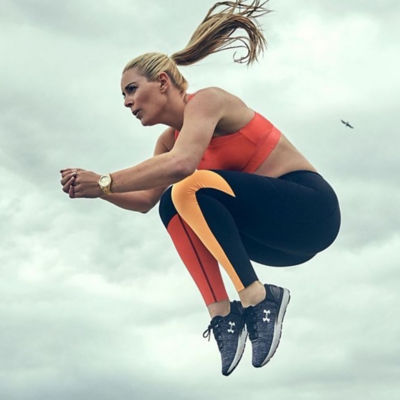
City Missions
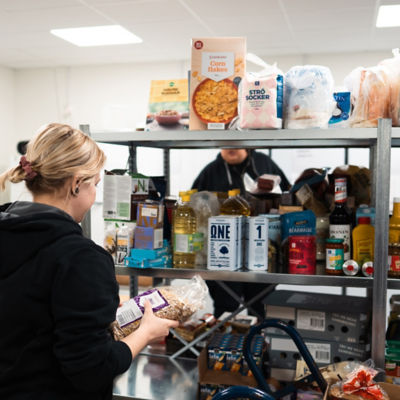
Albert Heijn

Burger King

Build-A-Bear

Mester Grønn

Luxury Retailer

Brüder Schlau

Tesco Mobile

The Financial Times


Allianz Care

Focus Brands

Pret A Manger

Ulysse Nardin
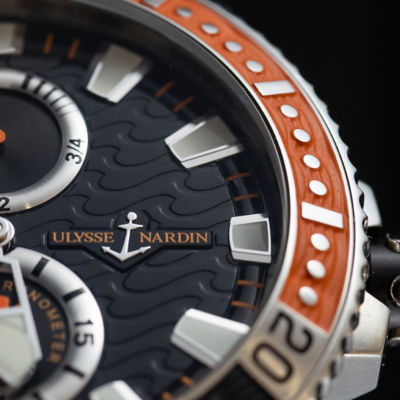
R.M. Williams
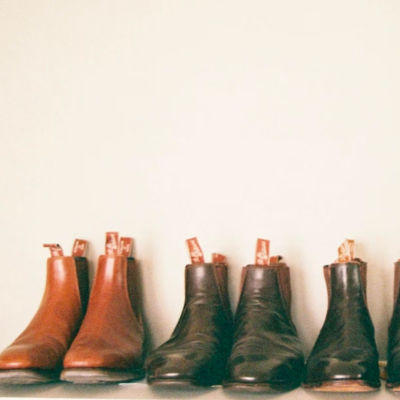
Hershey's

New Ireland Assurance

Funding Circle

Sørlandets Bakhage

Kerry Group

Pet Wellbeing

Volkswagen Financial Services
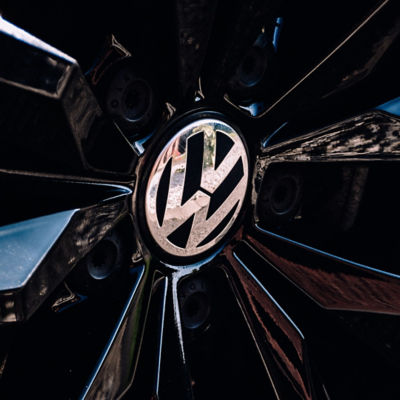
Dr. Barbara Sturm
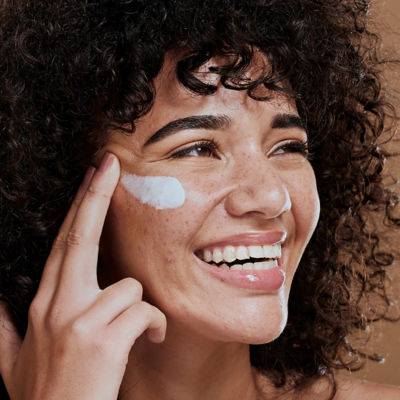
Estee Lauder

Watchfinder
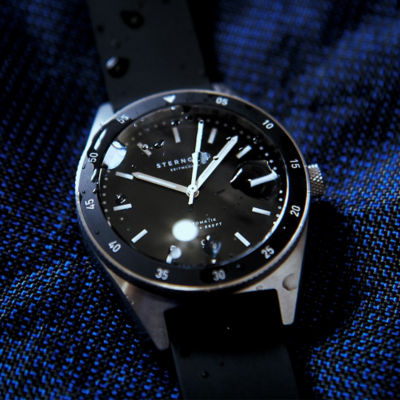
Cath Kidston

Annie Selke

Brought to you by:

Under Armour
By: Rory McDonald, Clayton M. Christensen, Daniel West, Jonathan E. Palmer
After twenty years of growth unprecedented in the sports apparel industry, Under Armour finds itself with a new record to beat: making the leap from $5 to $10 billion in sales - a feat only…
- Length: 27 page(s)
- Publication Date: Jan 9, 2018
- Discipline: Strategy
- Product #: 618020-PDF-ENG
What's included:
- Teaching Note
- Educator Copy
$4.95 per student
degree granting course
$8.95 per student
non-degree granting course
Get access to this material, plus much more with a free Educator Account:
- Access to world-famous HBS cases
- Up to 60% off materials for your students
- Resources for teaching online
- Tips and reviews from other Educators
Already registered? Sign in
- Student Registration
- Non-Academic Registration
- Included Materials
After twenty years of growth unprecedented in the sports apparel industry, Under Armour finds itself with a new record to beat: making the leap from $5 to $10 billion in sales - a feat only accomplished to date by competitors Nike and Adidas. At the heart of this challenge is how Under Armour can maintain its brand's authenticity while adding new products that fuel future growth. The case traces the evolution of Under Armour's brand and describes how the company chose to extend or not extend its brand into adjacent categories and markets in the past. Now Under Armour needs to decide on their next steps. Should the company focus on its core markets? Should it stretch the brand into more adjacencies? Or should it consider something more radical, like app-related sales through subscriptions and wearable technologies?
Learning Objectives
How can the performance apparel company move into unfamiliar market segments--without losing touch with athletes?
Jan 9, 2018
Discipline:
Industries:
Sports apparel
Harvard Business School
618020-PDF-ENG
We use cookies to understand how you use our site and to improve your experience, including personalizing content. Learn More . By continuing to use our site, you accept our use of cookies and revised Privacy Policy .
Under Armour Company’s Strategic Challenges Case Study
Introduction.
Under Armour is one of the many companies that have seen its inception and growth through athletic events. Under Armour found its inception with the sole aim to improve the athletes’ performance by promoting the participation conditions of the athletes in all weather conditions. The aim was achieved through innovative measures of tailor-made athletic products of various athletic events inform of apparel, footwear, and accessories to promote the body conditions and enhance performance. These tailored products are an alternative to the old athletic gears. They include various products for male and female, old and youth athletes, and all end users involved in sporting and recreational activities. The overall activities involve designing branded products with the company’s logo, marketing, distribution, and athletic wear to various sports individuals and organizations.
Marketing activities include sponsorship agreements with colleges and professional sports institutions to support a sporting event and sell the athletic garments to individual athletes and team managers. This marketing approach promotes product and brand awareness on field sports audiences and new global markets through television coverage, enhancing market penetration and expansion. Individual athletes’ sponsorship poses a great challenge to the company’s financial planning and budgeting as performance-based agreements. However, several other foreseen challenges hinder the company’s expansion that includes the famous Brexit affecting the European countries as new policies will be put in place to regulate business activities plus entrance, expansion, and tax levy. The competitive edge posed by other companies providing competing products with bigger market share and financial strength that include Nike and Addidas adds to expansion challenges affecting Under Armour. Despite these challenges, the foreign market remains one of the unexploited markets that gives great hope for exploiting and expanding market share.
Strategic Issue
Under Armour enjoys the identical brand recognition of its athletic garments locally in North America and gaining gradual penetration to Japan, China, and European countries. The objective to earn over $4 billion from the sale of the company’s product is the chief strength for the company’s growth with the current localized market share of over 90% of sales in North America alone. The company’s revenue position of over $1,834,921 provides financial strength to support marketing, brand, and product promotion in existing and new markets. Moreover, distribution channels in the form of factory outlets, company websites, and specialty stores for the diverse sports and recreational activities garments in different market segments bolster its revenue and market share. Additionally, licensing agreements with other firms and advertisements through television programs, catalogs, online and social media promote consumer demand, expand target market segments, and increase revenue income.
Various challenges hinder the growth and expansion of the Under Armour. Competition from established market-leading companies such as Nike and Adidas is a threat to the company’s expansion and market penetration. The extra financial cost that cuts into the net revenue is required to market and advertise the products and company brand, including sponsorship programs to different individual athletes, sports organizations, and sporting events. Sponsoring individual athletes’ cost has an added constraint in financial planning as agreements are performance-based and cannot provide a robust position to make a future forecast of the company’s marketing and expenditure cost. Moreover, the cost of funding the designing of retail outlets in different market segments to promote the company’s retail consumer store product adds to the financial burden. Therefore, the strategic issue is, ‘What tactical business steps should the company take to break these growth challenges and increase its market share?’
External Environment
In an organization, the external environment comprises the immediate competitive environment and the extensive environmental factors. The immediate competitive environment refers to factors such as economic, market, and competitor forces that dictate the industries’ opportunities, profits, and expansion. The Macro-environment factors include political, economic, social, cultural, technology, environmental factors, and legal policies that direct its objectives, strategy, and direction of operation. In the sports, attire manufacturing industries, sporting, and recreational activities are factors of the external environment that support the industry’s existence and growth.
The relevance of the political factors involves the decision by states, countries, or governing bodies to hold a sport or recreational event in a certain geographical location. A change in the political environment such as Europe Brexit leads to new terms in the business environment that may include a change of trading conditions, inflation, and currency that negatively affect the industry’s income revenue. The negative impact on the economic conditions affects the buyers’ buying potential and subsequently reduces the profit margin hindering growth and expansion. Additionally, political influences by governing bodies on sponsorship of sports or recreational events limit companies’ competition and subsequently affect growth and expansion of an industry.
The shifting socio-cultural needs of sports, recreational activities, and healthcare awareness by the rising population adjust the manufacturers’ flexibility to meet the changing consumer markets. Incorporating technology to support sales, research, and product development to meet the dynamic customer behaviors promotes industry growth. Combining the two factors heightens the competition between local and established industry firms that manufacture various quality performance products to meet the market demand. The heightened competition forces companies to take strategically costly steps to cut on market share or face market fall-out.
Environmental and legal factors influence the sporting events within a given geographical location. Various climate conditions widen the sports and recreational activities of a population and diversify customer needs. Developed countries have strict legal policies aimed at protecting its citizens and the county’s economic position by regulating local and foreign companies’ business operations. Companies must comply with the regulations that involve local and global rivalry to gain market penetration before engaging in any business activity to promote their brand name and boost its business activities.
Porter’s Five Forces Analysis
The five forces analysis provides important economic market characteristics of various products that shape the strategic direction of Under Armour and subsequently influence the growth of the industry. The analysis offers knowledge on market size given the geographical locations, the existing demand and supply forces, competitive forces, and the technological shift that offer business growth and expansion opportunities. Buyer bargaining power influences the degree of sales, profit potential, and the overall growth of a company in a given target market. Companies promote brand awareness and customer loyalty through several advertisements and promotional efforts to claim a significant market niche with a considerable impact on the companies’ profit margin. Sponsorship programs in the sports industry promote sales through buyer brand identification and restrict competition from new entrants and small companies such as global market penetration by Under Armour already dominated by Nike and Adidas.
The diversity of sports activities influences product quality in any given industry. The presence of substitute products with superior quality promotes competition between manufacturing industries to control buyers’ tastes and needs. In the sports industry, athletic and leisure shoe, apparel and sports equipment companies provide substitute products, influence product price, and increase advertisement and promotions cost that subsequently decrease income revenue and threaten growth. Sponsorship and athlete endorsement lowers the seller bargaining power as there is high customer switching cost to sponsoring companies. The industry competition from the new entrants is thus limited due to the sponsorship and promotion barriers by large-scale operators such as Nike, causing high investment requirements from new companies. The rivalry is due to the need to improve market standing and business performance by the existing companies, fear of being faced-out, or overtaken in the otherwise slow-growing industry.
Key Success Factors
Sponsorship and endorsement programs, coupled with the provision of highly designed performance products, promote customer satisfaction and loyalty despite being costly. The growth of technological know-how such as online and social media amongst the world population, specifically in the developed countries and the youth with various ways to access the global market, proves to be a good solution for market penetration. Companies must gain their competitive advantage by incorporating these factors with a quick delivery process to meet these customers’ needs to promote their market relevance.
Industry Profile and Attractiveness
Despite the great political influence, dynamic legal regulations, and the economic instability in several markets due to inflation, the sports industry remains the most attractive to the incumbent investors with high projected growth and expansion due to the population’s shifting ecological needs. The healthcare awareness, changing recreational activities and the rapid technological growth provide a need for product diversity, increased revenue and growth in the industry
Company Situation
In the earlier years of its life, Under Armour experienced a milestone in marketing, brand promotion, and sales growth that positively influenced its revenue income and local market penetration. Licensing agreements, college, high school, and professional athletes’ sponsorship and endorsements proved to accelerate market penetration and the company’s growth rate improving the sales revenues every year. The company aims to provide highly designed quality performance apparel, footwear, and accessories that provided a competitive advantage over rival and substitute products. Under Armour established its competitive edge by expanding its selling units to retail customers, online markets, the opening of factory outlets, and specialty stores. The expansion provided promotional marketing and customer service touch that improved brand recognition and customer satisfaction.
Under Armour realized the highest increase in percentage growth of net sales in the year 2011 with a characteristic fall in sales growth rate in 2012(Table1). Nike enjoyed total sales of $20.9 billion in fiscal 2011, with a huge sales increase of $3.2 billion to hit a total of $24.1 billion in 2012. The great margin of total sales between the two competing companies informs that there is a great space for growth and expansion of the industry. Nike’s huge sales growth of $3.2 billion in 2012 provides a clear indication that much of the industry’s market is untapped and needs exploitation as the sports and recreational industry is still in the growth phase of its life cycle.
Financial Analysis
The analysis of the financial data indicates that Under Armour has had a good financial position with an ability to meet its liability obligations that had continually grown each year. As shown in Table 1 (Appendix), the profitability ratio of gross profit margin stagnated at about 48%, which means that there was no significant growth in revenues. However, profitability ratios indicate that the benefits have increased from 2008 through 2012. Specifically, profit margin, return on assets, and return on equity have increased from 5.27% to 7.02%, 7.84% to 11.13%, and 11.55% to 15.76%. Liquidity ratios indicate that the liquidity of Under Armour fluctuated across the five-year duration (Table 2).
In 2008 through 2012, the quick acid ratios were 2.24, 9.26, 12.79, 2.26, and 5.52 respectively. Working capital ratios for 2008 through 2012 were 10.69, 26.98, 42.36, 11.83, and 18.70 correspondingly. Leverage ratios of Under Armour are less than one. Evidently, debt ratios of Under Armour are 0.094, 0.037, 0.024, 0.085, and 0.053 for 2008 through to 2012. Debt to equity ratios of the same period are 0.14, 0.005, 0.03, 0.12, and 0.08 while equity ratios are 0.68, 0.73, 0.74, 0.69, and 0.71 (Table 3). In the aspect of activity ratios, inventory turnover has 2.04, 3.01, 2.48, 2.34, and 2.99 for 2008 through 2012 respectively.
The financial analysis indicates that Under Armour has robust financial status, which would enable it to grow and develop in competitive markets. Under Armour has a profit margin of about 6%, Nike has about 24%, and Adidas has about 4.8%. Profit margin shows that Under Armour ranks second in profitability performance. Liquidity ratios such as quick ratio and working capital ratio reveal that Under Armour can pay its liabilities at any instance. Under Armour has leverage ratios of less than one, it shows that its debts are significantly low and within acceptable financial levels. The activity ratio of inventory turnover shows that Under Armour is active for its inventory has a turnover of two or three times. Therefore, the overall financial status of Under Armour indicates that it can grow its sales and augment profits.
SWOT Analysis
Under Armour’s objective and passion for the production of highly designed performance attire despite high cost incurred promotes brand name and customer loyalty over competitor products. The company’s expansion of selling units to retail customers, online, and websites supported by the technological shift by consumers provides a great means for product promotion and marketing to lead to profitability, as seen in the current financial position of the company. The growing diversified consumers’ need in the global market is a good opportunity for investment to drive the company objectives to venture into the foreign market. Contractual agreements with manufacturing firms’ pull together the companies’ interest and provide a combined strength to absorb the shocks of rivalry and competition from local and global established firms providing substitute products. The financial strength together with the opportunities promotes profitability, growth, and expansion of the company in the industry
Despite the prospective growth potential of the company, great challenges limit its expansion. Lack of long-term contractual agreements with the manufacturing firms having no obligation to make and use the company’s products leads to reduced market penetration and expansion due to poor brand recognition and customer loyalty. Under Armour, diverse products directed to meet various customer needs faces several setbacks due to the impact of external forces. Petroleum-based products that largely rely on the cost of oil prices, which undergo frequent fluctuation together with charged-cotton products relying on the cotton harvest, have led to unstable product prices and product availability due to the cost of production subsequently damaging the customer trust on the company and brand loyalty. Rival companies and competing substitute products take advantage of these production challenges to gain an extended market segment and threaten the company’s market share while risking market fall-out as a result of poor returns on investment.
Recommendation
To achieve its objectives of increased sales, market penetration, and expansion, Under Armour, must take several tactical steps directed towards reduced production cost, market penetration, stable product price, adequate production of diverse products, and long-term contractual agreements. These steps will provide a robust operation platform for the company to compete in the local and global markets by adequately meeting different customer needs while reducing operational costs and improving product quality and availability to boost net revenue returns.
Strategic Recommendations
Contractual agreements with manufacturing firms provide a great step for market penetration and global expansion. Under Armour Company should take a bold step to make long-term contractual agreements with other firms in foreign markets to boost production and use of its products. In addition, the company should establish constant cotton supply in different cotton production countries for Charged-cotton products that high rely on cotton harvest leading to the shortage in the market. The production of these seasonal cotton products should be bulk during the cotton harvest season and stocked to avoid shortage in the market.
Moreover, the company should target to promote more sponsorship programs in colleges and professional sports organizations in the foreign market as the chief marketing and brand promotion tool. Expansion of selling units with product diversification to meet the increasing number of customers with diverse needs is another strategic marketing tool that is still underutilized. In this view, Under Armour should strive to open and maintain extra stocked selling units in foreign markets while keeping local stores fully facilitated to limit the chances of product shortage or unavailability in the market.
Sales from the foreign market should continually be monitored every quarter, and adjustments made to meet the needs of the diverse customers and competition of the global companies. The company’s profit target should be set and revised for both local and foreign markets every quarter for the whole year. Analyze sponsorship agreements to check the extent of coverage, cost, and effect of individual agreements on the market within a given location—controlled production cost to control the pricing of all company’s products, including Charged-cotton products to build customer loyalty.
Strategic Justification
Production of Charged-cotton products in bulk during the cotton harvest season will help the company meet customer demand of these products throughout the seasons. The production move will help control and stabilize market prices for these cotton products. Establishing additional selling units such as factory outlets, online websites, and retail customers to cut across local and foreign markets will provide customers with easy placement of orders and faster delivery of goods and build customer loyalty while at the same time acting as the marketing and promotional sites. The technology incorporation and additional outlets will provide an additional point of research to understanding customer needs that will promote the company’s objective of meeting the ever-changing diverse customer needs. Additionally, sponsorship programs will provide on-field authenticity of the company’s products to the audience while building a brand relationship with the sports organizations and professional athletes that helps boost trust from other consumers with active lifestyles in the global market. These steps promote market penetration, growth, and expansion of Under Armour in the sports industry across both local.
Appendix: Financial Ratios
Table 1: Profitability Ratios.
Table 2: Liquidity Ratios.
Table 3: Leverages Ratios.
Table 4: Activity Ratios.
- Chicago (A-D)
- Chicago (N-B)
IvyPanda. (2020, November 3). Under Armour Company's Strategic Challenges. https://ivypanda.com/essays/under-armour-companys-strategic-challenges/
"Under Armour Company's Strategic Challenges." IvyPanda , 3 Nov. 2020, ivypanda.com/essays/under-armour-companys-strategic-challenges/.
IvyPanda . (2020) 'Under Armour Company's Strategic Challenges'. 3 November.
IvyPanda . 2020. "Under Armour Company's Strategic Challenges." November 3, 2020. https://ivypanda.com/essays/under-armour-companys-strategic-challenges/.
1. IvyPanda . "Under Armour Company's Strategic Challenges." November 3, 2020. https://ivypanda.com/essays/under-armour-companys-strategic-challenges/.
Bibliography
IvyPanda . "Under Armour Company's Strategic Challenges." November 3, 2020. https://ivypanda.com/essays/under-armour-companys-strategic-challenges/.
- Under Armour Company's Financial Perspective
- Under Armour Company's Marketing Strategy
- Under Armour Company's Brand Strategy in 2013
- Nike Company's Governance and Sustainability
- GASCO Company Objectives and Analysis
- EHarmony Company's Development Perspectives
- Porsche Company's Business Environment
- Bath & Body Works Company: Main Strategies
How Under Armour Uses Data Insights to Drive Innovation
Data insights, one click away, refocused priorities, data-driven storytelling.

With more than 200 million registered users around the world, Under Armour Connected Fitness provides technology to help athletes train, perform, and improve. The business unit includes MapMyFitness, Endomondo and MyFitnessPal.
Increase in day-7 retention
Increase in engagement, increase in time spent on app.
After acquiring popular apps like MapMyRun and MyFitnessPal in 2015, Under Armour Connected Fitness became the leading digital fitness company, with a digital product suite designed for the everyday athlete.
Eager to see how these new mobile offerings were helping users meet their fitness goals, Under Armour turned to Amplitude’s self service product intelligence platform. The results: lifts in retention, boosts to the bottom line and refocused priorities.
Amplitude has given us the tools to make the right decisions and make them quickly with confidence—and that saves us time, saves us money and makes us money. Amplitude gives us the chance to swing for the fences.

Before implementing Amplitude, Under Armour relied on its team of product analysts to build their own SQL queries in third party business intelligence platforms. The process was time-consuming and often required multiple iterations.
With Amplitude’s Product Intelligence platform, suddenly Under Armour had “analysis at our fingertips,” Carpenter said. “We were able to validate our assumptions and we could easily access the data to make quick analysis and react to the results.”
Stuart Kim-Brown, director of Product Analytics, agreed, observing that Amplitude’s easy to use interface, and out of the box product and growth analyses “empowered our product managers to be self-sufficient, to get at the answers they needed without having to wait for help from my team.”
In turn, Kim-Brown said, his team was freed to focus on more sophisticated models.
Greater access to data insights has made it easier and faster for Under Armour to experiment with new features and products. Leveraging Amplitude’s Segmentation , Funnels , and AB Test View they cut the experiment time from three months to one .
Hoping to further its goal of making athletes better, Under Armour decided to test out a big product bet designed to inspire its MapMyRun users to log more runs each week: Form Coaching Tips. A connected software product, Form Coaching Tips takes aim at poor form, which can cause injury and pain, keeping runners off the road. Using Amplitude’s Cohort, Segmentation , and Retention analyses, Under Armour saw the feature was a success, boosting day seven retention by 30% .
“This was something that really lifted retention for us and that equates to dollars for us because the more users we have using our app, the more money we’re making,” Carpenter said.
Building on the success of its Form Coaching Tips, which runners use post-workout, Under Armour decided to test a feature that would help users perfect their form before they lace up. The KPI: how much time users spent on the app with the addition of the new Target Zone Calculator, which estimates the best cadence or stride length zone for a user’s desired pace. Using Amplitude’s Funnels , they saw a gain of 10 seconds .
Amplitude has also helped Under Armour focus on its priorities by revealing important insights into its users. Using Amplitude’s Segmentation chart, Under Armour discovered that its race training plans had low user-engagement. Operating on the theory that the plans weren’t clicking with most of its users, Under Armour redesigned the plans to address a greater variety of goals, whether it was learning running basics or improving cardiovascular health. With Amplitude Cohorts , Under Armour saw a big payback: a 3x increase in its MVP (paying) users who leverage the plans and an increase in their free users tapping on the plan.
Amplitude does a really good job of highlighting what your data’s insights are. You can run all the charts you want but knowing what’s valuable is really the hard part. Amplitude is the best tool for that.

Actionable Insights Help Backstage Connect the Right Talent to the Right Opportunity
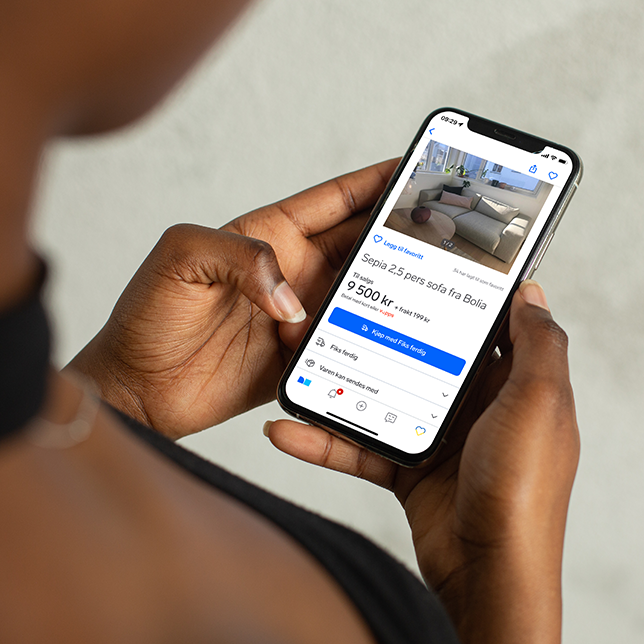
Enable Teams to Run with Data by Focusing On the Questions That Matter

2021 Datamonster of the Year: ABS-CBN’s Robbin Brillantes

How Lindblad Expeditions Turns Increased Digital Adoption into Once-in-a-Lifetime Experiences
Ready to get started.
See how your digital product drives your business.
To read this content please select one of the options below:
Please note you do not have access to teaching notes, under armour: creating and growing a new consumer brand.
Publication date: 28 March 2018
Teaching notes
The case traces the development of the Under Armour (UA) brand, product, and market growth under CEO and founder Kevin Plank from its inception in 1996 through 2016. UA provides a cohesive case study of how to launch and sustain a consumer brand even in the face of its third-party manufacturing approach, which gives its apparel no patentable design or fabric technologies. The case uses UA's brand and advertising development as a backdrop for the current pivotal issue of how to target women to sustain growth. UA's stated goal is to build a $1.9 billion women's business by 2019.
In laying out UA's growth and competitive moves, the case lets students analyze broadcast, social media, and other digital advertising campaigns in view of the company's brand development and strategic targeting. The case also highlights the importance of leveraging brand heritage and historical differentiation while respecting key nuances when extending into new markets (i.e., moving from a predominantly male-driven audience to female). It also allows an exploration of how to use consumer insight and broader cultural attitudes and trends to support extending a position into new markets.
- Advertising
- Campaign Analysis
- Consumer Marketing
- Growth Strategy
- Marketing Communications
- Marketing Strategy
- Positioning
- Product Development
- Product Management
- Social Media
Sternthal, B. and Malaviya, P. (2018), "Under Armour: Creating and Growing a New Consumer Brand", . https://doi.org/10.1108/case.kellogg.2021.000056
Kellogg School of Management
Copyright © 2018, The Kellogg School of Management at Northwestern University
You do not currently have access to these teaching notes. Teaching notes are available for teaching faculty at subscribing institutions. Teaching notes accompany case studies with suggested learning objectives, classroom methods and potential assignment questions. They support dynamic classroom discussion to help develop student's analytical skills.
Related articles
We’re listening — tell us what you think, something didn’t work….
Report bugs here
All feedback is valuable
Please share your general feedback
Join us on our journey
Platform update page.
Visit emeraldpublishing.com/platformupdate to discover the latest news and updates
Questions & More Information
Answers to the most commonly asked questions here
Academia.edu no longer supports Internet Explorer.
To browse Academia.edu and the wider internet faster and more securely, please take a few seconds to upgrade your browser .
Enter the email address you signed up with and we'll email you a reset link.
- We're Hiring!
- Help Center

Strategic Management Case 2: Under Armour

Related Papers
theido mokhara
SERGE TAELEMANS
Exact Angle Trisection with Straightedge and Compass by Secondary Geometry
Angle trisection is a classical problem of straightedge and compass construction from the ancient Greek mathematics. It concerns construction of an angle equal to one third of a given arbitrary angle, using only two tools: an unmarked straightedge and a compass. There are three classical problems in the ancient Greek mathematics which were extremely influential in the development of geometry. These problems were those of squaring the circle, doubling the cube and trisecting an angle. This Thesis focuses on the problem of trisecting an arbitrary angle. It is possible to trisect certain angles, e.g. a right angle. It is difficult to give an accurate date as to when the problem of trisecting an angle first appeared. Result of this research paper is an exact solution for the thousand-year challenge "Trisecting the Angle" by a construction with only a straightedge and a compass by means of the secondary Geometry.
ibrahim mohamud
José Carlos Vázquez Parra , Florina Arredondo Trapero
Se entiende por negocio inclusivo a aquel que incluye a los pobres y a los más vulnerables de la base de la pirámide económica como parte de su cadena de valor, ya sea como proveedores, empleados, distribuidores o consumidores. Este modelo de negocios, permite que las organizaciones ya no solo responsan a los impactos que generan, sino que también puedan contribuir a la mejora de las condiciones de vida de los que más lo necesitan. La Organización de las Naciones Unidas, considera que son los negocios inclusivos, una excelente forma de que la iniciativa privada participe de las problemáticas y los retos que actualmente enfrenta el mundo haciendo una contribución directa a los objetivos de desarrollo sostenibles (ODS). Con base en esto, el presente artículo tiene el objetivo de reflexionar sobre esta posible vinculación, por medio de un estudio que considera una muestra de 52 reportes de sostenibilidad de empresas inclusivas latinoamericanas firmantes del Pacto Mundial. Por medio de un análisis de contenido, se pretende identificar la posible contribución de estas organizaciones en los ODS, considerando sus características, giro económico y forma de inclusión de la base de la pirámide. Como conclusión, se presenta una clara tendencia al desarrollo de empresas agroindustriales del sector primario, los cuales efectivamente tienen una aportación activa a ciertos ODS de apoyo a necesidades básicas, aunque lamentablemente no a aquellos que se relacionan con cuestiones de sostenibilidad industrial y mejoramiento de herramientas que impulsen el bienestar. A pesar de los esfuerzos por mejorar las condiciones de vida de los más pobres, parece ser que las empresas de la región latinoamericana siguen teniendo claros limitantes en la implementación de proyectos más integrales, a causa del bajo nivel educativo, la falta de apoyo por parte del estado y la carencia de políticas públicas que promuevan este tipo de modelos de negocio.
Kazi Arafat Munna
Europasian Journal of Medical Sciences
Madhusudan Subedi
Europasian Journal of Medical Sciences vulnerability, expanding access to specialized NCUs for sick and small newborns is an important global priority to reduce neonatal mortality. Quality healthcare involves not only the delivery of evidence-based clinical care to infants but also the cultivation of positive experiences for both infants and their families. 11 The World Health Organization (WHO) has recommended various evidence-based interventions which have proven effective in preventing and managing preterm births and associated complications. 6,12,13 Those interventions offer significant benefits in achieving improved neonatal health outcomes. Nevertheless, high-quality care cannot be fully achieved unless the newborns and their families have a positive experience of care. 11 Research-based evidence in a global context highlighted that the admission of critically ill infants or PTIs in NICUs is a stressful situation for parents. 14-18 Their distress is linked to the condition and outcome of the PTIs, the separation of infants from parents, the altered parental role, and the necessary resources. 15,17,19 Such stress has the potential for a detrimental impact on both parents and their vulnerable infants during NICU hospitalization and in the postdischarge period. Early and prolonged separation resulting from the admission of PTIs in NCUs may lead to an inadequate opportunity for infant-parent bonding 20,21 and also poses challenges to the psychological well-being of parents. 15,18,20,21 Numerous studies have highlighted the risk of psychological problems among parents of PTIs admitted ABSTRACT Background Hospitalization in neonatal care units (NCUs) is distressing to parents. Stress and inadequate coping hinder parents' emotional health and parenting roles. Furthermore, it may impact short-and long-term developmental, cognitive, academic, and mental health outcomes among preterm infants (PTIs). This study aimed to explore the stress and coping mechanisms adopted by parents in NCUs. Data and Methods The descriptive phenomenological study was conducted in the NCUs of three public tertiary hospitals in Kathmandu, Nepal. In-depth interviews were conducted with 15 purposively selected parents, both mothers and fathers, of preterm and low birth weight infants admitted to the NCUs. The data were descriptively analyzed employing the Colaizzi method to elucidate the stress experiences and coping strategies of parents. Results The exploration of parents' experiences yielded two overarching themes, namely psychological distress and insecurity and coping with the support system. Parents' distress was linked to PTIs' condition, infant-parent separation, altered parenting roles, and prolonged hospitalization. Family, friends, peer parents, and NCU staff were parents' support sources. They coped with the situation by sharing experiences with peer parents, fostering closeness with the PTIs, and actively involving in care. Conclusion Admission of PTIs to NCUs was distressing to parents. Parents valued NCU staff's support for coping and expected more support. The provision of free newborn care service is pivotal in alleviating financial burden. Opportunities for fostering infant-parent attachment, active care involvement, and peer-to-peer support are effective coping measures for parents. Improving parental support provision in NCUs considering this stress and coping mechanisms would enhance psychological well-being of parents.
Daniel França
Amanda Delgado Garcia
Didac Roman
RESUMEN En este trabajo presentamos los materiales recuperados en la excavación del abrigo de la Font d'Horta (Vilafranca, Castelló). Las características de estos materiales, entre las que destacan las armaduras geométricas (entre ellas un segmento de doble bisel) y la datación obtenida sobre hueso, nos remiten a los momentos de transición entre las últimas poblaciones cazadoras y recolectoras y la llegada de las primeras comunidades neolíticas. La valoración de los datos en el contexto de la zona del Maestrat/Maestrazgo y sus vínculos con el litoral mediterráneo y el valle del Ebro nos permiten discutir su posible vinculación con unas u otras poblaciones, concluyendo que nos encontramos ante una ocupación de las últimas poblaciones mesolíticas de este territorio. LABURPENA Lan honetan, Font d'Hortako (Vilafranca, Castelló) babeslekuko indusketatik berreskuratutako materialak azaltzen dira. Material horien ezaugarriak ikusita, ehiztarien eta biltzaileen azken populazioen eta lehen komunitate neolitikoen arteko trantsizio-unekoak direla ondoriozta dezakegu. Material horien artean, armadura geometrikoak (haien artean, alaka bikoitzeko segmentu bat) eta hezurretik lortutako datazioa nabarmendu behar ditugu. Datuak Maestrat/Maestrazgo eskualdeko testuinguruaren eta Mediterraneoko itsasertzarekin eta Ebro haranarekin dituen loturen arabera baloratzeak beste populazio batzuekin izan zezaketen harremana aztertzea ahalbidetu digu eta, ateratako ondorioen arabera, horixe litzateke eskualde hartako Mesolitoko azken populazioetako baten okupazio bat.
RELATED PAPERS
E. Papadimitriou , Charalambos Kkallas , Anastasia Kiratzi
Jurnal Ilmiah PLATAX
Nego Bataragoa
Dheani Nurfitria
María Muñoz-García
Jonas O N A Kalmbach
IFAC Proceedings Volumes
Haruhisa Okuda
Oral Oncology Supplement
Simon Rogers
Ecology and Evolution
Stefano Meucci
devstud.org.uk
Mac Mashiri
Contoh proposal hari bersih sedunia - ahmad dimyati, SM
Ahmad Dimyati
Salwa Sahira Husna
Salwa Sahira
Indian Journal of Neurotrauma
Milan Tirwa
International Journal of Nephrology and Renovascular Disease
ahmed zahran
Adriana Ciulca , Isidora Radulov
Neurochemistry International
Joshua Jackson
International Journal of Electrical and Computer Engineering (IJECE)
Isaac Avazi
Phan Hong Khoi
International Journal of Scientific and Research Publications (IJSRP)
Chrine Hapompwe
Vinayak Jadhav
Journal of Cachexia, Sarcopenia and Muscle
john Beadle
ΤΟ ΑΡΧΑΙΟΛΟΓΙΚΟ ΕΡΓΟ ΣΤΗ ΒΟΡΕΙΟΔΥΤΙΚΗ ΕΛΛΑΔΑ ΚΑΙ ΤΑ ΝΗΣΙΑ ΤΟΥ ΙΟΝΙΟΥ
Olympia Vikatou
- We're Hiring!
- Help Center
- Find new research papers in:
- Health Sciences
- Earth Sciences
- Cognitive Science
- Mathematics
- Computer Science
- Academia ©2024
- Arts & Humanities
- Communications
CASE STUDY: Under Armour
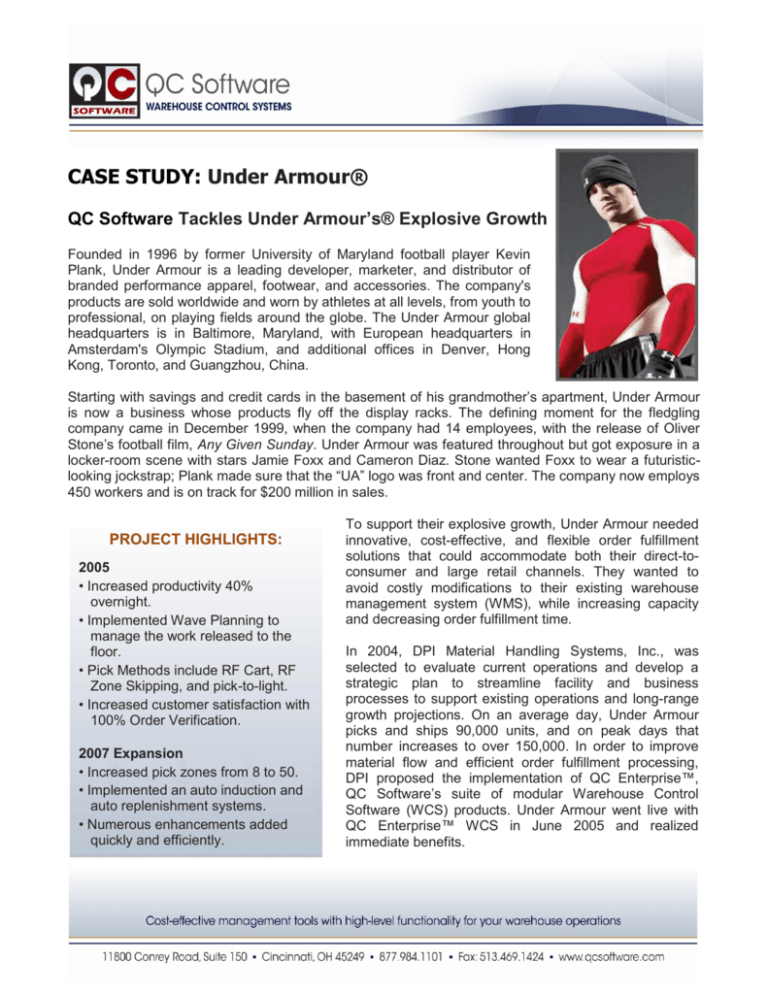
Related documents
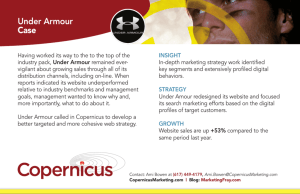
Add this document to collection(s)
You can add this document to your study collection(s)
Add this document to saved
You can add this document to your saved list
Suggest us how to improve StudyLib
(For complaints, use another form )
Input it if you want to receive answer

- FlashLine Login
- Phone Directory
- Maps & Directions
- Admission and Visits Overview
- Schedule a Visit
- Incoming Student Scholarships
- Undergraduate Admission
- Graduate Admission
- Academics and Majors Overview
- Advertising (B.S.)
- Digital Media Production (B.S.)
- Journalism (B.S.)
- Public Relations (B.S.)
- Journalism Educators (M.A. and Graduate Certificate)
- Master of Arts Degree
- Combined Bachelor's-to-Master's Degree Program
- Ph.D. Program
- Hands-On Experience Overview
- Student Media
- Student Organizations
- Student Awards and Accolades
- Study Abroad
- Student Resources Overview
- Advising and Academic Policies/Procedures
- Technology Requirements
- Room and Equipment Reservations
- Current Student Scholarships
- Future Student Scholarships
- Internship Resources
- Graduate Student Resources
- Internships and Careers Overview
- Alumni Career Spotlights
- Internship Spotlights
- People Overview
- Faculty and Staff
- Professional Advisory Board
- Pulitzer Prize Winners
- About Overview
- Vision & Mission
- Accreditation
- Annual Events
- Learning Facilities
- Scholastic Journalism (CSJ)
- Jargon: Alumni Newsletter
- Podcast: Around the Sphere

CLASSES PARTNER WITH CLIENTS FOR REAL WORLD EXPERIENCE
- Share on Facebook
- Share on Twitter
- " class="social-sharing-google" title="Share on Google+"> Share on Google+
- Share on LinkedIn
- Share by Email
Real-world experience holds immense importance in the dynamic landscape of education. At Kent State University, class partnerships serve as vital conduits for students to immerse themselves in practical applications of their learning.
This semester, under the guidance of dedicated professors, students across various disciplines are collaborating with partners such as the Akron Community Foundation, Kent State Athletics, the Kent State IT Department and Keep Ohio Beautiful.
These partnerships provide students with hands-on experience and foster meaningful connections between each other and the wider community, preparing them for the challenges and opportunities that lie ahead in their careers.
Research and Measurement in Advertising and PR
This class aims to teach students how to utilize primary and secondary research in integrated communication strategies, emphasizing ethical considerations in human subjects research and fostering critical thinking and effective communication skills with diverse audiences. Students culminate their learning by delivering well-informed presentations for real-world class partners.
This semester, Professor Cheryl Ann Lambert teaches one section of the class in partnership with the non-profit organization Keep Ohio Beautiful, while Professor Evan Bailey leads the other section in collaboration with Kent State Athletics.
Public Relations Case Studies
This course delves into public relations through real-world case studies and the development of PR plans for client organizations, involving teamwork and substantial writing in various formats outside class.
Professor Luke Armour teaches this class, and this semester's partner is the Kent State IT Department.
Capstone: Campaigns in Ad/PR
Capstone courses allow final-year students to demonstrate expertise in their major or area of study. This course requires student teams to combine research, planning and execution into a single advertising and public relations campaign developed for a real-world organization.
Professor Stefanie Moore, partnering with the Akron Community Foundation, teaches the class this semester.
- june24-jargon
Related Articles
Street address, mailing address.
- 330-672-3000
- [email protected]
- Find Majors and Degrees
- Kent State Kent Campus - facebook
- Kent State Kent Campus - twitter
- Kent State Kent Campus - youtube
- Kent State Kent Campus - instagram
- Kent State Kent Campus - linkedin
- Kent State Kent Campus - snapchat
- Kent State Kent Campus - pinterest
- Accessibility
- Annual Security Reports
- Emergency Information
- For Our Alumni
- For the Media
- Health Services
- Jobs & Employment
- Privacy Statement
- HEERF CARES/CRRSAA/ARP Act Reporting and Disclosure
- Website Feedback

IMAGES
COMMENTS
The case traces the development of the Under Armour (UA) brand, product, and market growth under CEO and founder Kevin Plank from its inception in 1996 through 2016. UA provides a cohesive case study of how to launch and sustain a consumer brand even in the face of its third-party manufacturing approach, which gives its apparel no patentable design or fabric technologies. The case uses UA's ...
Hailing from Baltimore, USA, Under Armour (started in 1996) is a company that manufactures footwear, sportswear, and casual apparel. It has also created various fitness apps to help people stay healthy. Under Armour became a multibillion-dollar brand under the leadership of Kevin Plank, the founder and CEO from its inception until 2020, when the COO Patrik Frisk replaced him, only to return as ...
Under Armour's marketing strategy has significantly contributed to its popularity among professional and amateur sportsmen and women. The company invested an impressive $579m in promotional techniques in 2019, focusing on impactful sporting partnerships, celebrity endorsements, as well as online and offline communications.
Tefi Alonso. November 25, 2022. It's hard to believe that Under Armour was established in 1996 given the way it competes with industry giants Nike and Adidas. A retail powerhouse in the athletics space, Under Armour is renowned around the globe due to its premium-quality products - apparel, footwear, accessories, and equipment - backed by ...
Abstract. After 20 years of growth unprecedented in the sports apparel industry, Under Armour finds itself with a new record to beat: making the leap from $5 to $10 billion in sales—a feat only accomplished to date by competitors Nike and Adidas. At the heart of this challenge is how Under Armour can maintain its brand's authenticity while ...
Fall 2021 Live Case study concentrates on Under Armour's effort to get into the digital fitness app industry. The company has experienced some issues with the three fitness apps it has ... We say at Under Armour, The Only Way Is Through. 2020 was a year that demanded agility, adaptation, and an unrelenting focus on changing consumer needs ...
In partnership with Merkle, Under Armour has developed a global ecommerce operation - a headless Salesforce Commerce Cloud build that is one of the most performant ecommerce sites on the web - supported by ongoing commercial optimization and a loyalty program launched in the US, and soon to be rolled out globally. Services.
After twenty years of growth unprecedented in the sports apparel industry, Under Armour finds itself with a new record to beat: making the leap from $5 to $10 billion in sales - a feat only accomplished to date by competitors Nike and Adidas. At the heart of this challenge is how Under Armour can maintain its brand's authenticity while adding new products that fuel future growth. The case ...
SPRING 2022 Live Case Study Under Armour (UA) THE CHALLENGE Spring 2022 Live Case study concentrates on Under Armour's effort to optimize its wholesale partner network in North America. The company has historically been heavily dependent on wholesale partners, but the industry continues to be influenced by a number of external factors.
Under Armour can scale its Connected Fitness apps to meet the demands of 175 million global users, innovate and deliver new products and features more quickly, and expand internationally by taking advantage of the reliability and high availability of AWS. ... Under Armour Case Study. Using AWS we have access to multiple Regions and Availability ...
CASE STUDY: Under Armour® QC Software Tackles Under Armour's® Explosive Growth Founded in 1996 by former University of Maryland football player Kevin Plank, Under Armour is a leading developer, marketer, and distributor of branded performance apparel, footwear, and accessories. The company's
Under Armour realized the highest increase in percentage growth of net sales in the year 2011 with a characteristic fall in sales growth rate in 2012 (Table1). Nike enjoyed total sales of $20.9 billion in fiscal 2011, with a huge sales increase of $3.2 billion to hit a total of $24.1 billion in 2012. The great margin of total sales between the ...
With Amplitude Cohorts, Under Armour saw a big payback: a 3x increase in its MVP (paying) users who leverage the plans and an increase in their free users tapping on the plan. Amplitude does a really good job of highlighting what your data's insights are. You can run all the charts you want but knowing what's valuable is really the hard part.
Under Armour Case Study PDF. // TABLE OF CONTENTS. Under Armour was founded in 1996 by Kevin Plank, a former football player with the University of Maryland. Plank came up with a synthetic textile design which enabled sweat to be "wicked-‐away" during high levels of physical activity.
Abstract. The case traces the development of the Under Armour (UA) brand, product, and market growth under CEO and founder Kevin Plank from its inception in 1996 through 2016. UA provides a cohesive case study of how to launch and sustain a consumer brand even in the face of its third-party manufacturing approach, which gives its apparel no ...
Under Armour Case Study. case study. Course. Strategic Management (MGT 489 ) 17 Documents. Students shared 17 documents in this course. University Central Washington University. Academic year: 2021/2022. Uploaded by: Anonymous Student. This document has been uploaded by a student, just like you, who decided to remain anonymous.
Under Armour Case Study. UA Case. Course. Promotional Strategy (MKTG 334) 18 Documents. Students shared 18 documents in this course. University Indiana State University. Academic year: 2019/2020. Uploaded by: Danny Colon. Indiana State University. 0 followers. 119 Uploads. 287 upvotes. Follow. Recommended for you. 3. Mazda Case Study 1.
Under Armour has consistently earned year over year increases in revenues. The most impressive feat is the comps year over year. UA earned double digit increases in revenues, the mid to upper 20's, consecutively from 2011 through 2015. The same can be said for Net Income (with the exception of 2015, 11.7% comp).
Operations Management questions and answers. INSTRUCTIONSRead the case study, "Under Armour's Strategy in 2020: Can it Revive Sales and Profitability in its Core North American Market?" (Case-8) in the textbook. The case study can be found on page C-86 in the textbook. Create a 3 page assignment that goes into Under Armour and the case.
What financial performance issues do you see at Under Armour based on the data in case Exhibits 1, 2, and 3? The North American market is the strongest market for UA and it has steadily been decling in net revenue since 2016 going from 4 billion in 2016 to 3 billion in 2019.
CASE STUDY: Under Armour® QC Software Tackles Under Armour's® Explosive Growth Founded in 1996 by former University of Maryland football player Kevin Plank, Under Armour is a leading developer, marketer, and distributor of branded performance apparel, footwear, and accessories. The company's products are sold worldwide and worn by ...
Under Armour Case Study. Slide 1. Click the card to flip 👆. - To serve customers needs, Under Armour can match its strengths to its opportunities. -It would be very beneficial for Under Armour to continue to add variety to their product and focus on strengthening Brand Awareness. -Under Armour started to do this with the "I will what I want ...
Under Armour 2018 Case Study. Under Armour CEO Kevin Plank has employed you as a consultant to assess the company's overall situation and recommend a set of actions to improve the company's future prospects. Prepare a report to Mr. Plank that includes. (1) an evaluation of the five competitive forces in the global market for performance ...
This course delves into public relations through real-world case studies and the development of PR plans for client organizations, involving teamwork and substantial writing in various formats outside class. Professor Luke Armour teaches this class, and this semester's partner is the Kent State IT Department. Capstone: Campaigns in Ad/PR.